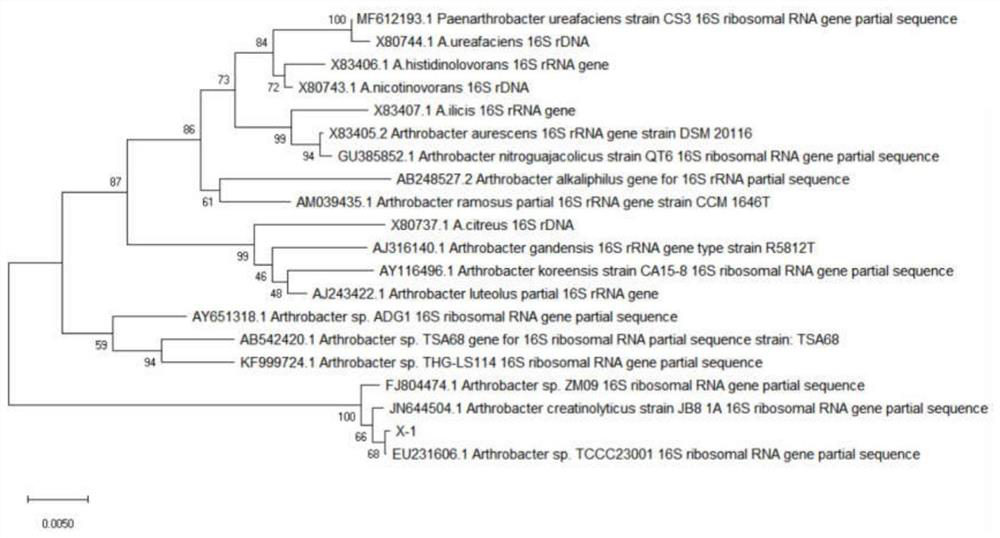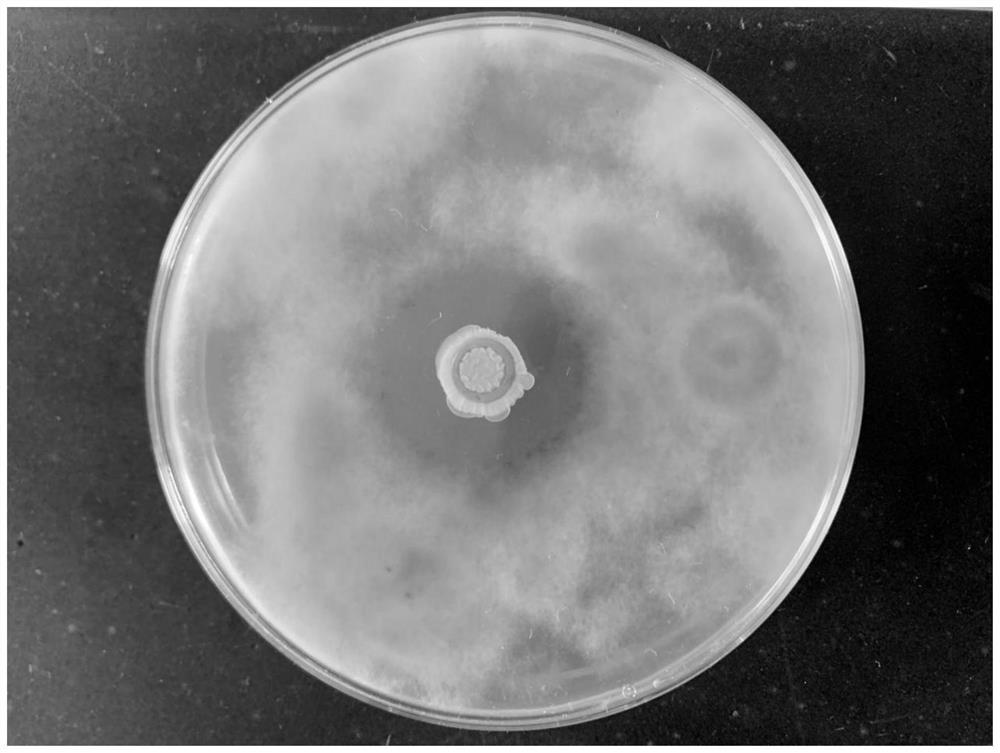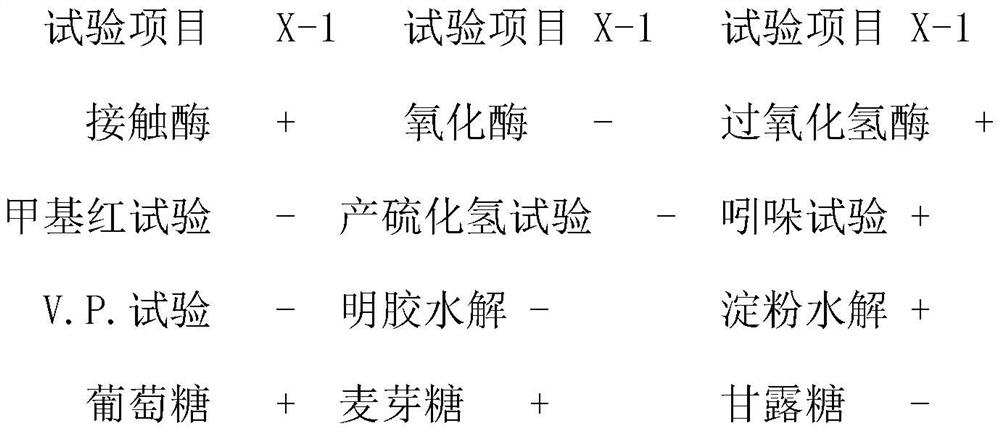Arthrobacter sp. and application thereof as decomposition agent for decomposing vegetable straws
The technology of Arthrobacter and decomposing agent is applied in the application field of decomposing agent, which can solve the problems of no biological control, difficult storage and transportation, etc., and achieve the effects of reducing allelopathy, being beneficial to plant absorption, and having strong adsorption capacity.
- Summary
- Abstract
- Description
- Claims
- Application Information
AI Technical Summary
Problems solved by technology
Method used
Image
Examples
Embodiment 1
[0030] Example 1 Isolation and Identification of Arthrobacter SP. CGMCC No.19486
[0031] 1. Isolation of strains
[0032] Weigh 1g of soil sample and add it into 99mL sterile water, shake and incubate on a shaker at 180r / min for 20min, and carry out 10-fold gradient dilution, each dilution is 10 -4 、10 -5 、10 -6 Use a pipette gun to draw 100 μL and evenly spread it on the beef extract solid plate, place it in a constant temperature incubator at 45°C, and pick a single colony after 24 hours.
[0033] The strains isolated from the soil were inoculated respectively on the sodium carboxymethylcellulose medium, cultured in a 45°C incubator for 24 hours, stained with 1% Congo red for 1 hour, decolorized with 5% NaCl for 1 hour, and the diameter of the hydrolysis circle was observed. The cellulase-producing strain X-1 was screened out.
[0034] The inoculated strain X-1 was cultured in 100mL inorganic salt culture solution containing 100mg / L glyphosate at 30°C and 180r / min in a ...
Embodiment 2
[0045] 1) The effect of Arthrobacter on glyphosate degradation: Inoculate the activated X-1 seeds in the fermentation medium, the volume of the fermentation bottle is 100mL / 500mL, the initial pH of the fermentation medium is 6.0, and the fermentation medium is heated at 45°C and 180r / min Cultivate under the conditions for 72 hours, measure the residual amount of glyphosate by HPLC, calculate the degradation rate, and the degradation rate reaches 89.7%.
[0046] The fermentation medium: add glyphosate at a final concentration of 100 mg / L to the sterilized inorganic salt basic culture solution. Wherein, the inorganic salt medium (g / L) is: MgSO 4 ·7H 2 O 0.2g, CaCl 2 2H 2 O 0.03g, FeSO 4 ·7H 2 O 0.01g, KH 2 PO 4 0.4g,Na 2 HPO 4 0.6 g, MnSO 4 0.02g,NH 4 NO 3 1.0g, distilled water 1L. Adjust the pH to 7.0. Described HPLC measures and adopts Kromasil-C18 column (150mm * 4.6mm, 5 μ m); Mobile phase V (methanol): V (water)=70: 30, wherein the phosphoric acid that con...
Embodiment 3
[0050] The preparation of embodiment 3 decomposing agent
[0051] 1) Strain activation to obtain seed liquid:
[0052] ①According to the conventional existing technology, pick a ring of Phanerochaete chrysosporium that has been activated and rejuvenated and inoculate it into (per 100mL water addition) glucose 1.8, yeast extract 1.5, potassium dihydrogen phosphate 0.03, magnesium sulfate 0.03, In a liquid medium composed of pH 6.0, culture at 42° C. with ventilation for 72 hours to obtain a seed solution for use.
[0053] ②Inoculate the activated and rejuvenated Bacillus subtilis or Arthrobacter respectively in the liquid culture medium according to the conventional existing technology, and culture in a shake flask at 45°C for 24 hours; among them, the liquid culture medium (addition amount per 100mL water): peptone 1, yeast extract 0.5, sodium chloride 0.5, PH7.0,.
[0054] 2) Solid culture
[0055] ① After microscopic examination of the obtained seed liquid without any bac...
PUM
 Login to View More
Login to View More Abstract
Description
Claims
Application Information
 Login to View More
Login to View More - R&D
- Intellectual Property
- Life Sciences
- Materials
- Tech Scout
- Unparalleled Data Quality
- Higher Quality Content
- 60% Fewer Hallucinations
Browse by: Latest US Patents, China's latest patents, Technical Efficacy Thesaurus, Application Domain, Technology Topic, Popular Technical Reports.
© 2025 PatSnap. All rights reserved.Legal|Privacy policy|Modern Slavery Act Transparency Statement|Sitemap|About US| Contact US: help@patsnap.com



